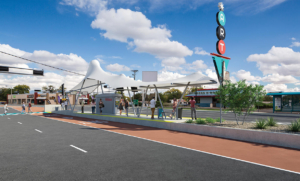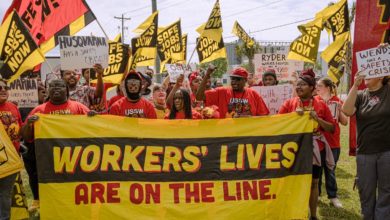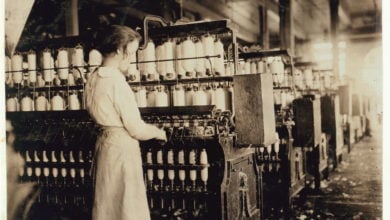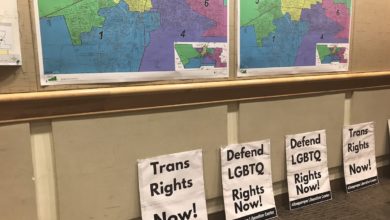 In the last few years, political leaders in Albuquerque decided to declare war on its working people and those less fortunate. Through a series of decisions, city leaders chose not to provide real help to workers and instead chose to support initiatives that benefit the rich.
In the last few years, political leaders in Albuquerque decided to declare war on its working people and those less fortunate. Through a series of decisions, city leaders chose not to provide real help to workers and instead chose to support initiatives that benefit the rich.
Like the rest of New Mexico, Albuquerque has a long history of low wages and widespread poverty. Sixty-three percent of all New Mexicans work in service-oriented jobs for low pay and no benefits, with high unemployment rates across the region.
The need for a mass transit system to serve the Albuquerque working class has long been evident. Residents have long been burdened by an inadequate city bus system with riders forced to deal with crowded expensive buses with limited schedules and extremely poor weekend service.
In 2015 in response to growing demand, Republican Mayor Richard Berry and his administration decided to initiate a project which they claimed would address mass transit problems and inspire inner-city economic development. His promise, however, failed to materialize..The Berry administration quickly decided to emphasize economic development rather than services for working people. A conservative Republican, Berry touted his business experience and promised efficiency and strong economic development.
In devising the new plan, his administration’s capitalist, anti-working class orientation became abundantly clear as they proposed the development of the Albuquerque Rapid Transit System (ART).
Berry chose to serve his own class by proposing a $119 million project using 60-foot electric buses to service only a nine mile stretch of Central Avenue — the city’s main thoroughfare. There was no plan to increase service to the under-served working class and poor ares of the city nor to expand the desperately needed hours of service.
The administration focused almost exclusively on having a strong, rapid service on the nine mile stretch to encourage more economic development to downtown neighborhoods. The result is gentrification, which will drive out small businesses and bring high-end services for affluent residents.
Berry tried to sell the plan based on a tentative promise that the Federal Transportation Administration (FTA) would provide a $75 million grant with Albuquerque taxpayers funding the remaining $19 million.
Opposition to the plan was immediate and widespread with opinion polls showing little support. The ability to attract major new development seemed dubious at best. It was also clear that the proposal provided little hope for better service to working people. In fact the vote on a non-binding referendum showed overwhelming dislike of the project. Nevertheless, city council members — dominated by the Democratic Party — voted to fund the project 7 to 2.
The transit construction led to major traffic problems, while small businesses along the nine-mile stretch suffered as parking disappeared and access to stores and restaurants become limited or nonexistent. Several small businesses were forced to close, newly vacant buildings attracted vandalism, and city tax revenues decreased.
Then, the problems got worse. Fairly quickly, the cost of the project skyrocketed to $135 million. This new figure meant that construction would take place at an astounding $15 million a mile. One station that was originally constructed incorrectly ended up costing $5 million alone. Additional complications arose as the newly elected Trump administration took office and made it clear that they were less interested in such projects. Still, the city council reasserted its support. As the project neared completion, engineering problems arose which delayed completion, and delivery of buses fell behind schedule. When buses finally began to be delivered, operational failures occurred immediately. Oil leaked from the axles, charging stations did not function properly and the guaranteed 275-mile range for buses became 200 miles. The FTA made it clear that it would not release the grant money until all buses had been delivered and certified.
In the midst of the continuing disasters, Berry left office and was replaced by Democrat Timothy Keller. Now, the ART problems were his problems. Keller’s first step was to travel to Washington, D.C., to verify federal support for the $75 million. FTA officials reaffirmed that no money would be released until all problems were corrected and warned that the funds may not be available at all.
Keller’s problems were further exacerbated when he learned that Berry left behind a $40 million deficit in the regular city budget. Keller had campaigned on the promise that he would not raise taxes without the approval of voters. But, he quickly went to city council and proposed raising the gross receipts tax (sales tax). Again, Democrats on city council quickly approved this most oppressive of tax hikes — dealing yet another significant blow to working people.
As of this publication, none of these problems have been resolved. Only a few of the buses have been delivered and none have been certified. Nothing in the ART project is operational. What is clear is that a two-pronged attack on workers has been imposed by the pro-rich city administrators. The workers of Albuquerque must unite to demand services that meet their needs, rather than serving to fuel gentrification.






